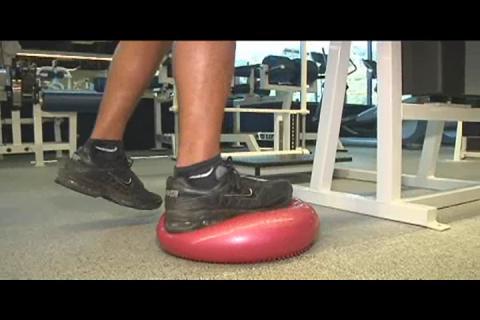By Thomas Plowinski, SPT
Physical Therapy Prehabilitation in Malta and Queensbury, NY
When you hear the term “physical therapy” relative to the orthopedic outpatient setting, a lot of what comes to mind likely revolves around performing activities to improve flexibility, strength, and endurance following an injury or surgery. While this rehabilitation process is what is involved in many cases, there are a number of other aspects to PT that may often be overlooked or lesser known. For example, most people are unfamiliar with the idea of prehabilitation- a program designed to prevent injury or expedite recovery following a surgical procedure. Over the past decade, there has been substantial evidence to support the use of prehabilitation.
The most common use of prehabilitation occurs prior to a surgical procedure. Total hip replacements, total knee replacements, rotator cuff repairs, spinal, and heart surgeries are all examples of major procedures for which prehabilitation is shown to be effective. Prehab programs often include strengthening exercises, balance activities, endurance training, flexibility exercises and proprioceptive training. The idea of prehabilitation is simple: if you can have a better overall baseline of function going into surgery, you are much further advanced along the road to recovery. From a physical standpoint, it makes perfect sense. However, there are some other enticing reasons to be receptive to prehab. First, research shows that preoperative physical therapy leads to reduced time spent in post-acute rehab facilities; including inpatient care, skilled nursing facilities, and home health care. While these settings do have great services to offer, the outpatient setting is where you will often find the greatest benefit for returning to daily function. A second reason to consider prehab is that it can lead to reduced cost for services following surgery. According to one study, prehabilitation physical therapy lead to an adjusted cost reduction of over $850-$1,200 per person! In an age where the need for knee replacements and hip replacements are skyrocketing to new proportions, getting a head start on recovery seems like a no-brainer.
Prehabilitation services are not limited to just before surgeries alone. The athletic population is one that should consider going through this process. Not only would it put them ahead of the game if an injury were to occur and surgery was required (ACL, for example); but by identifying weaknesses or areas of the body to address before the season begins puts the athlete at a decreased risk for suffering the injury in the first place. Additionally, those battling cancer and undergoing chemotherapy treatments are another group of patients that would benefit from prehabilitation. One therapist indicates that her patients that received PT treatment before chemo felt the effects of the draining treatment much less than those who didn’t. A simple strengthening and endurance program can go a long way in offsetting the negative effects. Finally, one added benefit of prehabilitation for any patient is that it allows you to get to know your physical therapist for when you do need PT. It is comforting knowing you have a friend in a place that already knows you and will provide you the personal care you need to recover your function as efficiently as possible.
References
American Academy of Orthopedic Surgeons. Can physical therapy before hip or knee replacement surgery improve outcomes?: Prehabilitation reduces need for postoperative care by nearly 30 percent. PR Newswire; 2014.
Snow R, Granata J, Ruhil A, Vogel K, McShane M, Wasiewlweski R. Associations between preoperative physical therapy and post-acute care utilization patterns and cost in total joint replacement. J Bone Joint Surg Am, 2014; 96(19): e165.
Reis E. Better sooner and later: Prehabilitation. PT in Motion; 2016. Accessed from http://www.apta.org/PTinMotion/2016/2/Prehabilitation/






